#avco corporation
Explore tagged Tumblr posts
Text

America's Mighty Missiles Stand Ready. Weapons of Deterrence, the Atlas, Minuteman, Titan and Polaris...
#avco corporation#boris artzybasheff#60's#60s#60s icons#national defense#atomic age#Atlas#minute man#polaris#titan
5 notes
·
View notes
Text

"America's Mighty Missiles Stand Ready. Weapons of Deterrence, the Atlas, Minuteman, Titan and Polaris…", Avco Corporation advertisement by Boris Artzybasheff, 1963
88 notes
·
View notes
Photo

Avco Broadcasting Corporation Production
13 notes
·
View notes
Photo

Located in Nashville, Tennessee, and long one of the biggest industrial employers in the state, Avco Aerostructures built the wings for the BAe-146. As a major second tier supplier, Avco Aerostructures also built the wings of the Lockheed Tristar, the B-1, and the Gulfstream bizjets. Avco Lycoming was responsible for the ALF 502 engines on the BAe-146 as well. Both entities were subdivisions of Avco (Aviation Corporation) which was founded in 1929 as a holding company of several small airlines vying for airmail contracts. Early investors included Fairchild Aircraft and the Lehman Brothers. Avco eventually come under the control of E.L. Cord who had assumed control of Auburn Auto and through ruthless cost-cutting, amassing an impressive conglomerate of companies that were all under Avco. Cord clashed with the nascent ALPA over the first pilot's strike in history at one of Cord's airlines. He lost out and was forced to spin off his airline holdings which eventually became American Airlines. Two of Avco's manufacturing subsidiaries were Consolidated Aircraft as well as Vultee Aircraft- they merged in 1943 to form Convair which was in turn spun off by Avco in 1947. Lycoming initally built car engines for the car manufacturers owned by Avco before getting bought by Avco in 1927. Ten years later, Avco Lycoming switched to building aircraft engines exclusively. For a British airliner design, the BAe-146 incorporated significant American content, the biggest of which came from Avco Aerostructures and Avco Lycoming. In fact, nearly half of the value of most commercial aircraft are in the engines. www.lajeteepress.com What do you mean you haven't pressed the BUY button yet to get your hands on "Fighting to be Heard" to feed your ravenous inner avgeek? Remember folks, I won't STFU about the BAe-146 until every last copy is out the door and in the hands of avgeeks everywhere and anywhere. #avgeek #aviation #aircraft #planeporn #instaplane #BAESystems #BritishAerospace #BAe146 #AvcoAerostructures #Lycoming #Avco #instagramaviation #splendid_transport #instaaviation #aviationlovers #flight #AvgeekSchoolofKnowledge #AvGeekNation https://www.instagram.com/p/CfA2_iCOE4m/?igshid=NGJjMDIxMWI=
#avgeek#aviation#aircraft#planeporn#instaplane#baesystems#britishaerospace#bae146#avcoaerostructures#lycoming#avco#instagramaviation#splendid_transport#instaaviation#aviationlovers#flight#avgeekschoolofknowledge#avgeeknation
3 notes
·
View notes
Text
TELEVISION aka GEORGE RUINS A NEIGHBOR’S TV aka THE TELEVISION SUIT
June 17, 1949

“Television” aka “George Ruins a Neighbor’s TV” aka “The Television Suit” is episode #49 of the CBS Radio series MY FAVORITE HUSBAND broadcast on June 17, 1949. It later served as the basis for the “I Love Lucy” episode “The Courtroom” (ILL S2;E7) first aired November 10, 1952.
Synopsis ~ Liz and George's visit to their next-door neighbors, the Stones, turns into a disaster when George tries to repair the Stones' new television set by himself.
REGULAR CAST

Lucille Ball (Liz Cooper) was born on August 6, 1911 in Jamestown, New York. She began her screen career in 1933 and was known in Hollywood as ‘Queen of the B’s’ due to her many appearances in ‘B’ movies. With Richard Denning, she starred in a radio program titled “My Favorite Husband” which eventually led to the creation of “I Love Lucy,” a television situation comedy in which she co-starred with her real-life husband, Latin bandleader Desi Arnaz. The program was phenomenally successful, allowing the couple to purchase what was once RKO Studios, re-naming it Desilu. When the show ended in 1960 (in an hour-long format known as “The Lucy-Desi Comedy Hour”) so did Lucy and Desi’s marriage. In 1962, hoping to keep Desilu financially solvent, Lucy returned to the sitcom format with “The Lucy Show,” which lasted six seasons. She followed that with a similar sitcom “Here’s Lucy” co-starring with her real-life children, Lucie and Desi Jr., as well as Gale Gordon, who had joined the cast of “The Lucy Show” during season two. Before her death in 1989, Lucy made one more attempt at a sitcom with “Life With Lucy,” also with Gordon.
Richard Denning (George Cooper) was born as Louis Albert Heindrich Denninger Jr., in Poughkeepsie, New York. When he was 18 months old, his family moved to Los Angeles. Plans called for him to take over his father's garment manufacturing business, but he developed an interest in acting. Denning enlisted in the US Navy during World War II. He is best known for his roles in various science fiction and horror films of the 1950s. Although he teamed with Lucille Ball on radio in “My Favorite Husband,” the two never acted together on screen. While “I Love Lucy” was on the air, he was seen on another CBS TV series, “Mr. & Mrs. North.” From 1968 to 1980 he played the Governor on “Hawaii 5-0″, his final role. He died in 1998 at age 84.
Ruth Perrott (Katie, the Maid) was also later seen on “I Love Lucy.” She first played Mrs. Pomerantz, a member of the surprise investigating committee for the Society Matrons League in “Pioneer Women” (ILL S1;E25), as one of the member of the Wednesday Afternoon Fine Arts League in “Lucy and Ethel Buy the Same Dress” (ILL S3;E3), and also played a nurse when “Lucy Goes to the Hospital” (ILL S2;E16). She died in 1996 at the age of 96.
Bob LeMond (Announcer) also served as the announcer for the pilot episode of “I Love Lucy”. When the long-lost pilot was finally discovered in 1990, a few moments of the opening narration were damaged and lost, so LeMond – fifty years later – recreated the narration for the CBS special and subsequent DVD release.
Gale Gordon (Rudolph Atterbury) and Bea Benadaret (Iris Atterbury) are mentioned, but not in this episode.
GUEST CAST
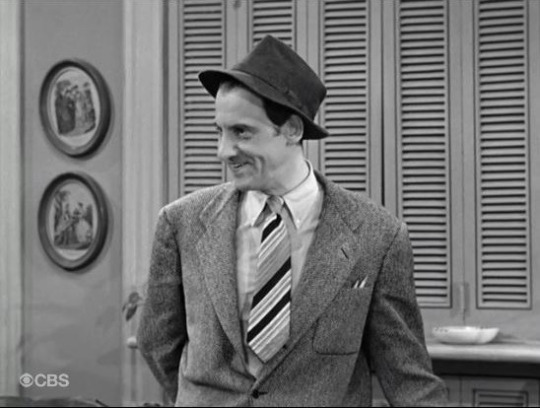
Hans Conried (The Process Server) first co-starred with Lucille Ball in The Big Street (1942). He then appeared on “I Love Lucy” as used furniture man Dan Jenkins in “Redecorating” (ILL S2;E8) and later that same season as Percy Livermore in “Lucy Hires an English Tutor” (ILL S2;E13) – both in 1952. The following year he began an association with Disney by voicing Captain Hook in Peter Pan. On “The Lucy Show” he played Professor Gitterman in “Lucy’s Barbershop Quartet” (TLS S1;E19) and in “Lucy Plays Cleopatra” (TLS S2;E1). He was probably best known as Uncle Tonoose on “Make Room for Daddy” starring Danny Thomas, which was filmed on the Desilu lot. He joined Thomas on a season 6 episode of “Here’s Lucy” in 1973.
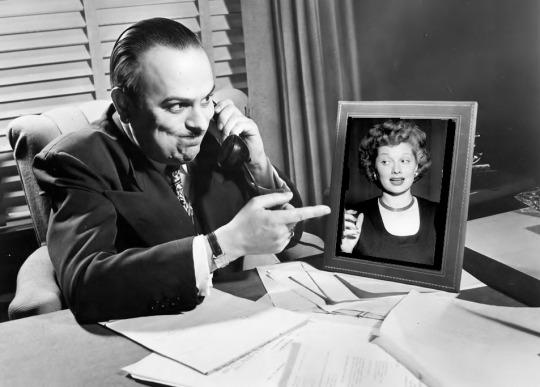
Frank Nelson (Frank Stone) was born on May 6, 1911 (three months before Lucille Ball) in Colorado Springs, Colorado. He started working as a radio announcer at the age of 15. He later appeared on such popular radio shows as “The Great Gildersleeve,” “Burns and Allen,” and “Fibber McGee & Molly”. This is one of his 11 performances on “My Favorite Husband.” On “I Love Lucy” he holds the distinction of being the only actor to play two recurring roles: Freddie Fillmore and Ralph Ramsey, as well as six one-off characters, including the frazzled train conductor in “The Great Train Robbery” (ILL S5;E5), a character he repeated on “The Lucy Show.” Aside from Lucille Ball, Nelson is perhaps most associated with Jack Benny and was a fifteen-year regular on his radio and television programs.

Mary Lansing (Mary Stone) was best known for playing Martha Clark and ten other characters in Mayberry on “The Andy Griffith Show” and “Mayberry R.F.D.”, both filmed at Desilu. Lucy lovers might remember her as the voice of weepy Cynthia in “Over The Teacups”, the Broadway play that the Ricardos and Mertzes attend in “Ethel’s Birthday” (ILL S4;E9). She met Frank Nelson performing on radio. They married in 1933 and had two children. Lansing appeared with him frequently on the "Jack Benny Program" during the 1950s.
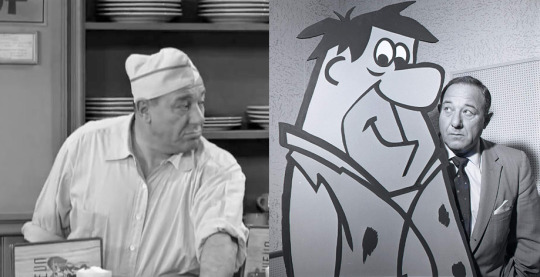
Alan Reed (Harry, the Judge) is probably best remembered as the voice of Fred Flintstone where he acted opposite Bea Benadaret (Iris Atterbury), who voiced Betty Rubble on the animated series. His only television appearance with Lucille Ball was on “The Lucy Show” in 1963, an episode which also featured Frank Nelson. In 1967, he did an episode of the Desi Arnaz series “The Mothers-in-Law”.
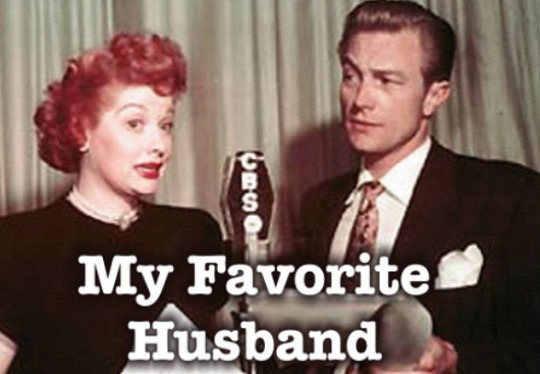
“My Favorite Husband” was based on the novels Mr. and Mrs. Cugat, the Record of a Happy Marriage (1940) and Outside Eden (1945) by Isabel Scott Rorick, which had previously been adapted into the film Are Husbands Necessary? (1942). “My Favorite Husband” was first broadcast as a one-time special on July 5, 1948. Lucille Ball and Lee Bowman played the characters of Liz and George Cugat, and a positive response to this broadcast convinced CBS to launch “My Favorite Husband” as a series. When Bowman was not available Richard Denning was cast as George. On January 7, 1949, confusion with bandleader Xavier Cugat prompted a name change to Cooper. On this same episode Jell-O became its sponsor. A total of 124 episodes of the program aired from July 23, 1948 through March 31, 1951. After about ten episodes had been written, writers Fox and Davenport departed and three new writers took over – Bob Carroll, Jr., Madelyn Pugh, and head writer/producer Jess Oppenheimer. In March 1949 Gale Gordon took over the existing role of George's boss, Rudolph Atterbury, and Bea Benaderet was added as his wife, Iris. CBS brought “My Favorite Husband” to television in 1953, starring Joan Caulfield and Barry Nelson as Liz and George Cooper. The television version ran two-and-a-half seasons, from September 1953 through December 1955, on air concurrently with “I Love Lucy.” It was produced live at CBS Television City for most of its run, until switching to film for a truncated third season filmed (ironically) at Desilu and recasting Liz Cooper with Vanessa Brown. In addition to being aired on the CBS Radio Network, the episodes were heard on the Armed Forces Radio Network, where the commercials were omitted.
THE EPISODE

“Television throws ‘My Favorite Husband’ for a loss, and the whole neighborhood into night courts.” ~ Mason City Globe-Gazette radio listing
As the episode opens, Liz and George are discussing their upcoming summer vacation. Liz has packed five suitcases - just for herself.

George is concerned that Liz’s swimsuit may be too skimpy, a subject explored again in “LIz Learns To Swim” (June 11, 1950) as well as on a couple of episodes of “I Love Lucy.”
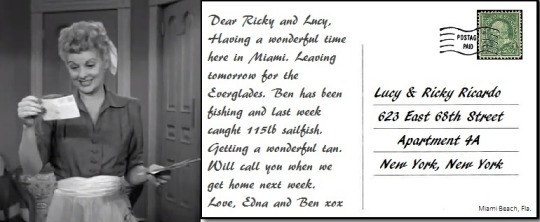
Liz and George realize that they do not know any of their neighbors well enough to ask them to water their lawn while they are away. Liz knows the first names (Frank and Mary) of the Stones next door because she read a postcard that was accidentally delivered to their house. George says that he hopes Liz didn’t read the message, but Liz lets it slip that “Mrs. Stone’s mother had a lumbago attack at Lake Tahoe.” On “I Love Lucy” Fred Mertz also chastised his wife about reading postcards delivered to their tenants. In 1951′s “Drafted” (ILL S1;E11) Fred say about Ethel...
FRED: “Some people build model airplanes. Ethel reads postcards.”
At the Stone home, Frank and Mary welcome the Coopers. Frank Nelson (Mr. Stone) does his trademark “Weeeeeell!” and the audience laughs, recognizing it from “The Jack Benny Program.” Mrs. Stone (Mary Lansing) asks if they would like to watch television. The Coopers do not yet own a television set, but Liz casually remarks that they don’t miss it.
LIZ: “I crawl in the Bendix and sing and George watches me through the little window.”

The Bendix Corporation (1924-1983) licensed their name to a line of electric clothes washing machines. The 1937 Bendix Home Laundry had a glass porthole door, a rotating drum and an electrically driven mechanical timer. The machine was able to auto-fill, wash, rinse and spin-dry. Bendix Home Appliances was later sold to Avco who sold it to Philco.
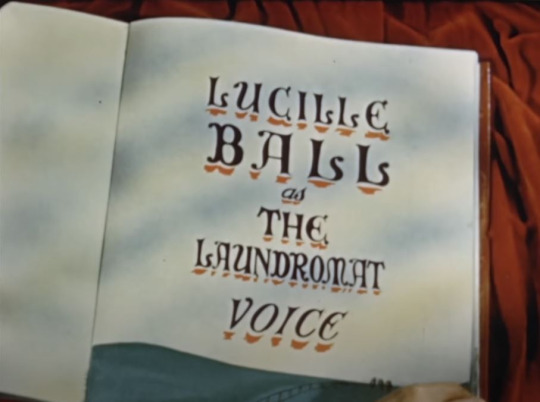
In 1952, Lucille Ball actually played a talking washing machine in a full-length Westinghouse industrial film called Ellis in Freedomland.
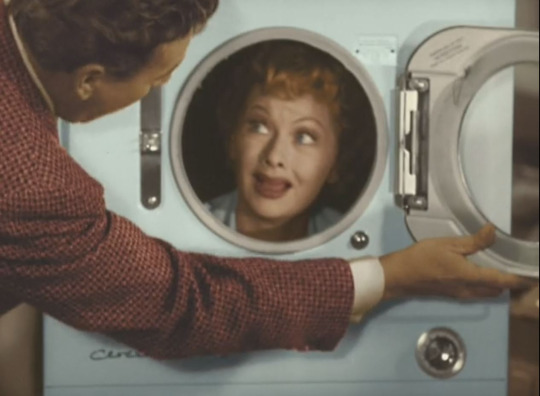
Six years later, when Desilu partnered with Westinghouse to present “The Westinghouse-Desilu Playhouse,” Ball did another industrial film for them titled Lucy Buys Westinghouse where she actually got inside the machine, fulfilling Liz Cooper’s off-the-cuff comment of 1949.
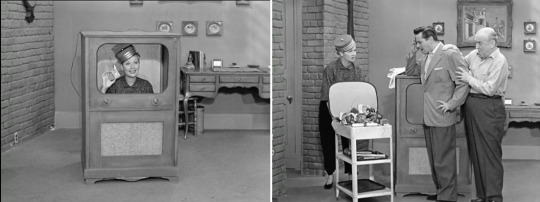
The idea of Liz pretending to be performing on television by getting inside a household appliance also recalls when Lucy Ricardo hollowed out their television set to help Ricky picture her doing a TV commercial in the now-famous Vitameatavegamin episode of 1952.

On “I Love Lucy”, it was the Mertzes who did not yet own a television set. By the end of 1949, 4.2 million US homes had a television. By 1953, 50% of all American households owned one. The increase was credited to “I Love Lucy” and the 1953 Republican and Democratic National Conventions.

Frank turns on his TV and after it warms up (a common problem with early televisions), the only program on any station seems to be wrestling. One channel is actually airing lady wrestling!
MARY: “Oh, they have more than wrestling, Mrs. Cooper. Sometimes they have boxing and baseball.”
Televised sports, especially wrestling and boxing, were the primary attraction in the early days of television, especially for male viewers. Long-haired blonde wrestler Gorgeous George was even mentioned on “I Love Lucy.”
ETHEL: “Our grandmothers must have had arms like Gorgeous George.” ~ ‘Pioneer Women’
In “Ricky’s Movie Offer” (ILL S4;E6) the Grocery Boy asks Lucy what she’s supposed to be in her Marilyn Monroe dress and wig, Fred quips “Gorgeous George.”
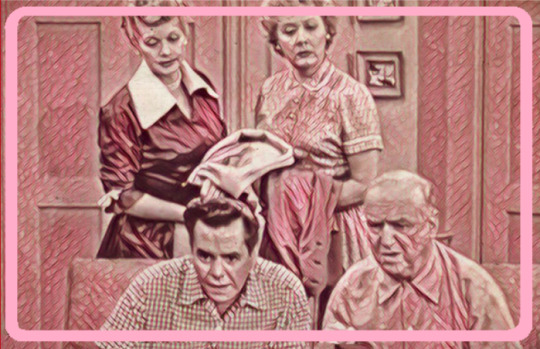
Nearly every time Ricky and Fred watch television it is to see a boxing match, such as in “Ricky and Fred are TV Fans” (ILL S2;E30) in 1953. That episode, like this radio broadcast, also featured Frank Nelson.
When the TV reception is fuzzy, Frank and George feel they can fix it themselves, much to the disbelief of their wives. Frank takes the back off the set:
FRANK (reading): “Back of this set should be removed by a qualified television repairman only.”
On “I Love Lucy” the warning is similar:
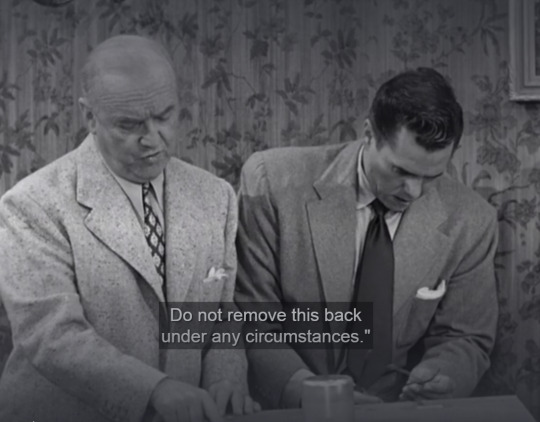
FRED (reading): “Danger! High Voltage! Do not remove this back under any circumstances!”
Both Frank and George and Ricky and Fred cause their sets to explode by fooling around with some loose wires! The wrecked TV results in name calling by both couples and the Stones / Mertzes threaten to sue the Coopers / Ricardos.
Next morning at breakfast, the Coopers are worried that a lawsuit will prevent them from going on vacation. Katy the Maid reports that there is a strange man at the door, whom they immediately suspect may be a process server. Liz tells Katie to lie and say that they are away for a fortnight in the Catskills. Katie answers the door nervously,
KATIE: “They left for a catnap in the Fortskills. I mean a nightcap in the Footskills.”
The Process Server (Hans Conried) surprises the Coopers when they sneak out the back door. They have been served!
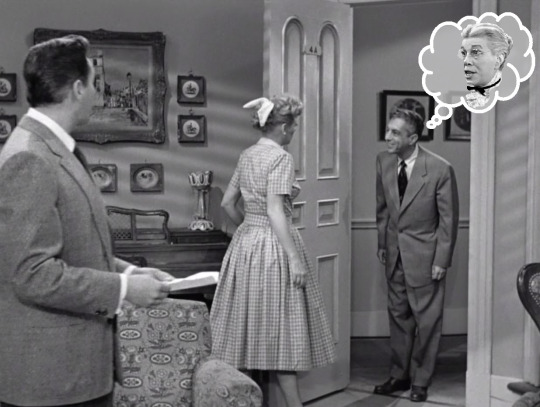
TRIVIA! Ironically, on TV the Process Server (Harry Bartell) at first asks the Ricardos where the Lewis apartment is, to throw them off the track. On “I Love Lucy,” Miss Lewis was an elderly tenant played for one episode (”Lucy Plays Cupid”) by Bea Benadaret, the actress who usually plays Iris Atterbury on “My Favorite Husband,” although she is not in this episode. Hans Conried appeared as Dan Jenkins and Percy Livermore on “I Love Lucy,” episodes that book-ended “The Courtroom” during season two!
George writes out Liz’s testimony, including stage directions telling her when to flirt with the Judge. Ricky Ricardo and Fred Mertz do the same thing on “I Love Lucy.” When Liz rehearses her testimony aloud, she states the date and time of the event as “June 13, 1949 at approximately 7:35pm” which was the real time and date of the broadcast. To keep the television version from becoming ‘dated’ - any reference to dates is purposefully omitted. Lucy instead tells the Judge (Moroni Olsen) the events happened “about three weeks ago.”

In the courtroom, George and Frank act as their own attorneys just as Ricky and Fred will do in “The Courtroom”. For economy sake, the radio script omits the character of the Bailiff who swears in the witnesses, although the character is part of the television script. Both scripts also include the flirtatious ‘stage directions’ for Lucy and Liz to appeal to the Judge’s vanity.
LIZ: “...when Mr. Stone suggested we watch television flutter eyelids at jury.”
On television, Lucy hikes up her skirts instead of fluttering her eyelids. Since TV is a visual medium, during her testimony she just does it, rather than says it.

TRIVIA: When the Ricardos and the Mertzes go to court again in “Lucy Makes Way for Danny” on the “Lucy-Desi Comedy Hour”, the judge who Lucy and Ethel try to flirt with by hiking up their skirts is played by Gale Gordon, who usually plays Rudolph Atterbury on “My Favorite Husband,” although he is not in this episode.
The final gag of the Judge’s TV also exploding is the same on radio and TV, except Liz intimates that they are headed for the city jail instead of the happy ending on television where the Judge encourages the couples to forgive one another and sends them home friends.
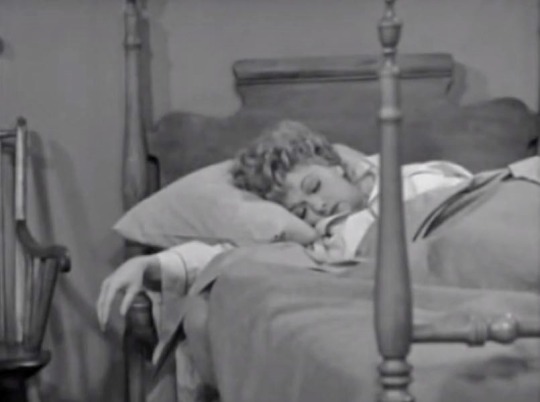
CODA
George and Liz are in bed and George cannot sleep. Liz encourages him to yawn to induce sleep. It works! ZZZZZZZZZZZZZZ
#My Favorite Husband#Lucille Ball#Gale Gordon#Bea Benadaret#I Love Lucy#the courtroom#television#The Television Suit#Frank Nelson#Mary Lansing#Alan Reed#Bob LeMond#Ruth Perrott#The Lucy Desi Comedy Hour#Bendix Company#Harry Bartell#Desi Aranz#William Frawley#Vivian Vance
4 notes
·
View notes
Text
Aircraft Ignition System Market Competition & Segment Analysis - The Importance of Diversification
Definition: The aircraft ignition system is a system used for igniting a fuel-air mixture. It provides an electrical spark to ignite the fuel/air mixture in the cylinders. It is separate from the airplane’s electrical system. There are two types of the aircraft ignition system, magneto and electronic. The magneto ignition system is used on most reciprocating aircraft engines. Electronic ignition system uses an electronic circuit to generate electric pulses which in turn generate a better spark that can even burn the lean mixture and provide better economy and lower emission.
Latest released research study on Aircraft Ignition System Market delivers volume and values at regional and company levels considering slowdown due to COVID across the globe. From a global perspective, the report analyzes historical data and future prospects to represent the total Global Aircraft Ignition System Market size broken down by various segments (type and application) and by highest potential and emerging countries. Some of the players profiled are Woodward (United States), TransDigm (United States), Unison (United States), G3I (United States), Meggitt (United Kingdom), Electroair (United States), SureFly (United States), Air Power, Inc. (United States), Aero Inc. (United States), Avco Corporation (United States).
Check Sample Report for Latest Industry Trends @: https://www.advancemarketanalytics.com/sample-report/2821-global-aircraft-ignition-system-market-2 Unlock new opportunities in Global Aircraft Ignition System Market; the latest release from AMA highlights the key market trends significant to the growth prospects, Let us know if any specific players or list of players needs to consider gaining better insights Global Aircraft Ignition System Market Segmentation's The segmentation chapter allows readers to understand aspects of the Global Aircraft Ignition System Market such as products, available technologies, and applications. These chapters are written in a way that describes years of development and the process that will take place in the next few years. The research report also provides insightful information on new trends that are likely to define the progress of these segments over the next few years. On the Basis of by Type (Magneto Ignition System (High Tension and Low Tension), Electronic Ignition System), Application (Fixed Wing Aircraft, Rotary Wing Aircraft, Unmanned Aerial Vehicles (UAVs)), Component (Spark Plugs, Igniters, Leads, Exciters, Other), Engine (Reciprocating Engine, Turbine Engine) On the Basis of Region: North America, United States, Canada, Mexico, Asia-Pacific, China, India, Japan, South Korea, Australia, Indonesia, Singapore, Rest of Asia-Pacific, Europe, Germany, France, UK, Italy, Spain, Russia, Rest of Europe, Central & South America, Brazil, Argentina, Rest of South America, Middle East & Africa, Saudi Arabia, Turkey & Rest of Middle East & Africa Market Drivers Increased Adoption of Advance Technologies in Aircraft Systems
Rising Number of Aircraft Deliveries Market Trend Technological Advancements in Aircraft Ignition System Restraints Falling Acceptance of Magneto Ignition Systems Challenges Stringent Government Rules and Regulations about Safety Inquire for Regional Report @: https://www.advancemarketanalytics.com/enquiry-before-buy/2821-global-aircraft-ignition-system-market-2 How geography and sales fit together This study is helpful to all operators who want to identify the exact size of their target audience at a specific geographic location. Aircraft Ignition System Market allow entrepreneurs to determine local markets for business expansion. This study answers the questions below: 1. Where do the requirements come from? 2. Where do non-potential customers reside? 3. How badly spending power of the customers in a particular region is affected? The Global Aircraft Ignition System Market is a source of authoritative information: 1. Fields and Subfields of Global Aircraft Ignition System Market 2. Ongoing developments and dynamics of the Global Aircraft Ignition System Market 3. Offer and requirement in Global Aircraft Ignition System Market 4. Aircraft Ignition System Market Size & Share by Country, Type & Application 5. Existing Trends, Obstacles, and Openings 6. Competitive Viewpoint of Market 7. Technological advances in Market 8. Supply chain and leading player’s analysis Know more about of Aircraft Ignition System market report @: https://www.advancemarketanalytics.com/reports/2821-global-aircraft-ignition-system-market-2 Key Questions Answered in the report: Q 1. How much revenue the Aircraft Ignition System Market is expected to make during the valuation period between 2019 and 2025? Q 2. Which product segment is expected to lead by the end of the forecast period? Q 3. What are the key growth strategies used by prominent players to stay competitive and fight against economic turnaround and COVID -19? -Q 4. What are the different segments within the Aircraft Ignition System Market and how are those individual segments gear up sales growth and by when? -Q 5.What next, which areas are likely to experience growth and what opportunities exist within the Aircraft Ignition System Market? Having our reviews and subscribing our report will help you solve the subsequent issues: Uncertainty about the future: Our research and insights help our customers predict the upcoming revenue pockets and growth areas. This will guide customers to invest their resources in this slowdown. Understanding market sentiments: It is very important to have a fair understanding of market sentiment for your strategy. Our insights will help you see every single eye on market sentiment. We maintain this analysis by working with key opinion leaders on the value chain of each industry we track. Evaluating potential business partners: Our research and insights help our clients in identifying compatible business partners and time frame to step up. Buy This Report @: https://www.advancemarketanalytics.com/buy-now?format=1&report=2821 Thanks for reading this article. If you required any research report for any related product or services please do contact us to get more insights via Analyst call. Media Contact:
Craig Francis (PR & Marketing Manager) AMA Research & Media LLP Unit No. 429, Parsonage Road Edison, NJ New Jersey USA – 08837 Phone: +1 (206) 317 1218
Connect with us at
https://www.linkedin.com/company/advance-market-analytics
https://www.facebook.com/AMA-Research-Media-LLP-344722399585916
https://twitter.com/amareport
0 notes
Text
LVHX-l
Lycoming Division of AVCO built the LVHX-l based on the hydrofoil principals demonstrated in Miami Shipbuilding Corporation’s Flying DUKW design.
Designed for use on land as well as water, with an aluminum hull 38 feet long and the capability of carrying a 5-ton payload at speeds of 35 knots, the LVHX-1 uses a submerged foil system.
https://www.globalsecurity.org/military/systems/ground/dukw-var.htm

25 notes
·
View notes
Text

The New Ideas Division Avco Corporation advertisement by Boris Artzybasheff, 1963
54 notes
·
View notes
Photo

Avco Broadcasting Corporation
7 notes
·
View notes
Text
YOUNG MATRONS’ LEAGUE PLAY
October 9, 1948
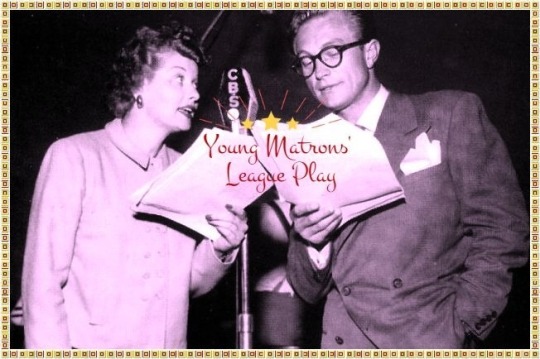
“Young Matron’s League Play” is episode #12 of the radio series MY FAVORITE HUSBAND broadcast on October 9, 1948.
Synopsis ~ George finds out that Liz is in the Young Matrons’ League play and finds a clever way to surprise her!
Note: This episode was aired before the characters names were changed from Cugat to Cooper. It was also before Jell-O came aboard to sponsor the show and before the regular cast featured Bea Benadaret and Gale Gordon as the Atterburys.
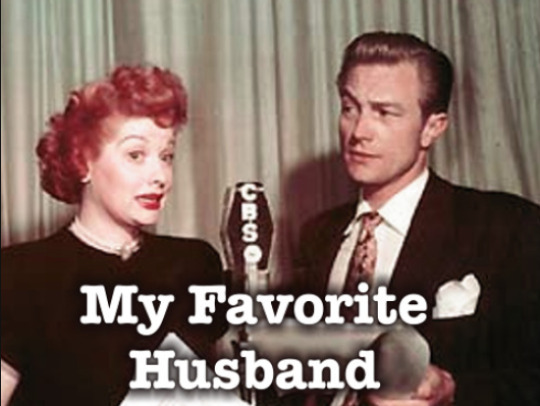
“My Favorite Husband” was based on the novels Mr. and Mrs. Cugat, the Record of a Happy Marriage (1940) and Outside Eden (1945) by Isabel Scott Rorick, which had previously been adapted into the film Are Husbands Necessary? (1942). “My Favorite Husband” was first broadcast as a one-time special on July 5, 1948. Lucille Ball and Lee Bowman played the characters of Liz and George Cugat, and a positive response to this broadcast convinced CBS to launch “My Favorite Husband” as a series. Bowman was not available Richard Denning was cast as George. On January 7, 1949, confusion with bandleader Xavier Cugat prompted a name change to Cooper. On this same episode Jell-O became its sponsor. A total of 124 episodes of the program aired from July 23, 1948 through March 31, 1951. After about ten episodes had been written, writers Fox and Davenport departed and three new writers took over – Bob Carroll, Jr., Madelyn Pugh, and head writer/producer Jess Oppenheimer. In March 1949 Gale Gordon took over the existing role of George’s boss, Rudolph Atterbury, and Bea Benaderet was added as his wife, Iris. CBS brought “My Favorite Husband” to television in 1953, starring Joan Caulfield and Barry Nelson as Liz and George Cooper. The television version ran two-and-a-half seasons, from September 1953 through December 1955, running concurrently with “I Love Lucy.” It was produced live at CBS Television City for most of its run, until switching to film for a truncated third season filmed (ironically) at Desilu and recasting Liz Cooper with Vanessa Brown.
MAIN CAST
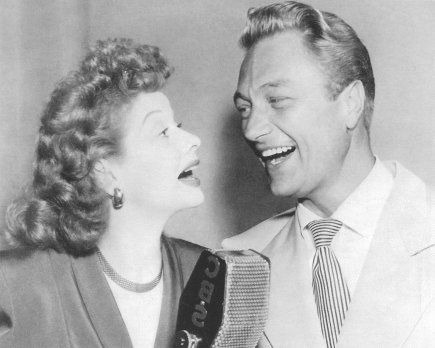
Lucille Ball (Liz Cugat) was born on August 6, 1911 in Jamestown, New York. She began her screen career in 1933 and was known in Hollywood as ‘Queen of the B’s’ due to her many appearances in ‘B’ movies. “My Favorite Husband” eventually led to the creation of “I Love Lucy,” a television situation comedy in which she co-starred with her real-life husband, Latin bandleader Desi Arnaz. The program was phenomenally successful, allowing the couple to purchase what was once RKO Studios, re-naming it Desilu. When the show ended in 1960 (in an hour-long format known as “The Lucy-Desi Comedy Hour”) so did Lucy and Desi’s marriage. In 1962, hoping to keep Desilu financially solvent, Lucy returned to the sitcom format with “The Lucy Show,” which lasted six seasons. She followed that with a similar sitcom “Here’s Lucy” co-starring with her real-life children, Lucie and Desi Jr., as well as Gale Gordon, who had joined the cast of “The Lucy Show” during season two. Before her death in 1989, Lucy made one more attempt at a sitcom with “Life With Lucy,” also with Gordon.
Richard Denning (George Cugat) was born Louis Albert Heindrich Denninger Jr., in Poughkeepsie, New York. When he was 18 months old, his family moved to Los Angeles. Plans called for him to take over his father’s garment manufacturing business, but he developed an interest in acting. Denning enlisted in the US Navy during World War II. He is best known for his roles in various science fiction and horror films of the 1950s. Although he teamed with Lucille Ball on radio in “My Favorite Husband,” the two never acted together on screen. While “I Love Lucy” was on the air, he was seen on another CBS TV series, “Mr. & Mrs. North.” From 1968 to 1980 he played the Governor on “Hawaii 5-0″, his final role. He died in 1998 at age 84.
Ruth Perrott (Katie, the Maid) was also later seen on “I Love Lucy.” She first played Mrs. Pomerantz, a member of the surprise investigating committee for the Society Matrons League in “Pioneer Women” (ILL S1;E25), as one of the member of the Wednesday Afternoon Fine Arts League in “Lucy and Ethel Buy the Same Dress” (ILL S3;E3), and also played a nurse when “Lucy Goes to the Hospital” (ILL S2;E16). She died in 1996 at the age of 96.
Bob LeMond (Announcer) also served as the announcer for the pilot episode of “I Love Lucy”. When the long-lost pilot was finally discovered in 1990, a few moments of the opening narration were damaged and lost, so LeMond – fifty years later – recreated the narration for the CBS special and subsequent DVD release.
GUEST CAST
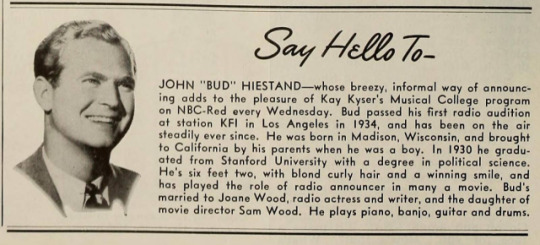
John Hiestand (Cory Cartwright) served as the announcer for the radio show “Let George Do It” from 1946 to 1950. In 1955 he did an episode of “Our Miss Brooks” opposite Gale Gordon.
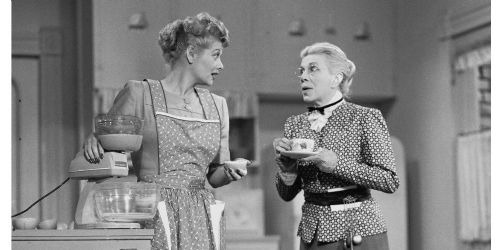
Bea Benadaret (Miss Worthingill, Play Director) was considered the front-runner to be cast as Ethel Mertz but when “I Love Lucy” was ready to start production she was already playing a similar role on TV’s “The George Burns and Gracie Allen Show” so Vivian Vance was cast instead. On “I Love Lucy” she was cast as Lucy Ricarodo’s spinster neighbor, Miss Lewis, in “Lucy Plays Cupid” (ILL S1;E15) in early 1952. Later, she was a success in her own show, “Petticoat Junction” as Shady Rest Hotel proprietress Kate Bradley. She starred in the series until her death in 1968.
In the previous episode, Miss Worthingill was played by Elvia Allman. In 1949, Bea Benadaret will play the regular role of Iris Atterbury, Liz’s best friend.
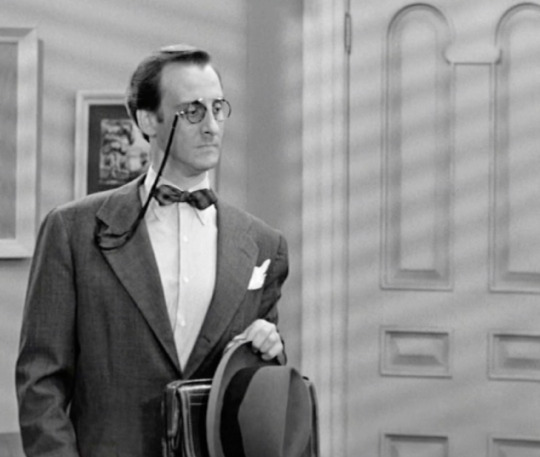
Hans Conried (Adrian LaHoya, Costume Designer) first co-starred with Lucille Ball in The Big Street (1942). He then appeared on “I Love Lucy” as used furniture man Dan Jenkins in “Redecorating” (ILL S2;E8) and later that same season as Percy Livermore in “Lucy Hires an English Tutor” (ILL S2;E13) – both in 1952. The following year he began an association with Disney by voicing Captain Hook in Peter Pan. On “The Lucy Show” he played Professor Gitterman in “Lucy’s Barbershop Quartet” (TLS S1;E19) and in “Lucy Plays Cleopatra” (TLS S2;E1). He was probably best known as Uncle Tonoose on “Make Room for Daddy” starring Danny Thomas, which was filmed on the Desilu lot. He joined Thomas on a season 6 episode of “Here’s Lucy” in 1973. He died in 1982 at age 64.
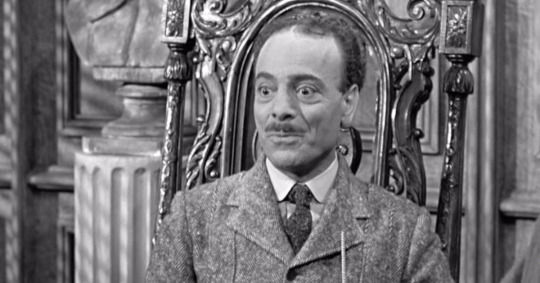
Jay Novello (Cabbie) appeared on “I Love Lucy” as superstitious Mr. Merriweather in “The Seance" (ILL S1;E7), Mario the gondolier in “The Visitor from Italy” (ILL S6;E5), and nervous Mr. Beecher in “The Sublease” (ILL S3;E31). He also appeared on two episodes of “The Lucy Show,” but Novello is probably best remembered for playing Mayor Lugatto on “McHale’s Navy” in 1965.
Beatrice, Miss Worthingill’s assistant, and the Stage Manager are played by uncredited performer.
THE EPISODE
While George is singing in the shower, Liz tells Katie the Maid not to tell him that it is opening night of the play. Liz gets a telephone call from Mrs. Worthingill, director of the play, to remind her that Adrian will be at her home for a costume fitting at 10am sharp! Liz is momentarily taken aback, thinking she is talking about the world famous costume designer Adrian, not Adrian La Hoya.
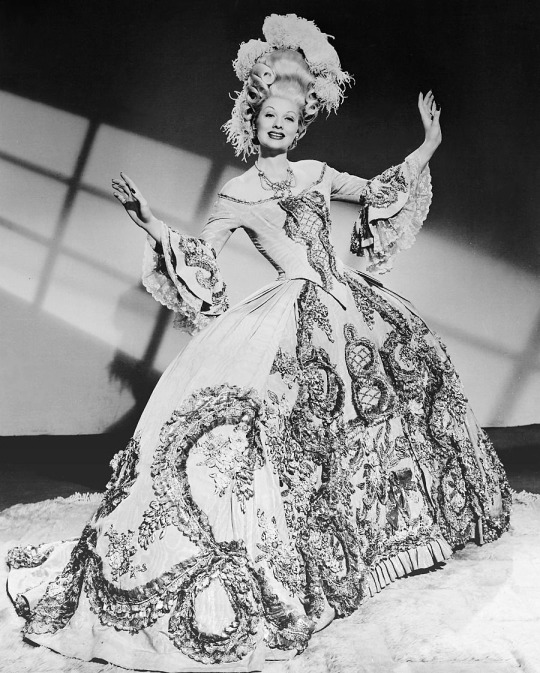
Adrian Adolph Greenburg (1903-1959), widely known simply as Adrian, was an American costume designer whose most famous work was for The Wizard of Oz and hundreds of Metro-Goldwyn-Mayer films such as Du Barry Was A Lady (above) starring Lucille Ball. He was usually credited onscreen with the phrase "Gowns by Adrian".
George comes down to breakfast and says that he has the day off because the bank is closed. Liz needs an excuse to get George out of the house for her fitting. She tells George she’s sick.
LIZ: “Look at my tongue. There’s a coat I.J. Fox would be proud of!”
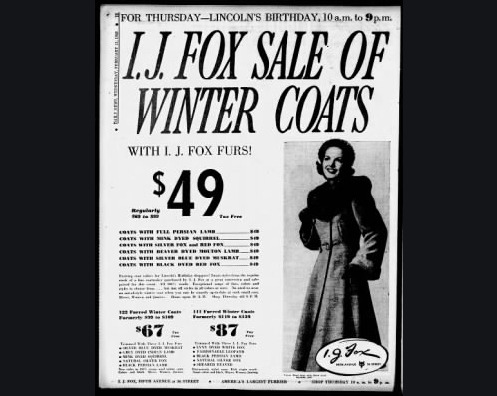
I.J. Fox is one of the nation’s leading furriers. The company is based in Boston, where in 1934 they built a historic art deco store on Washington Street.
George then thinks Liz might be expecting a baby. George decides to go golfing, only if Liz will promise to call the doctor.
Later, Katie answers the doorbell. It is Adrian the costumer (Hans Conried). George comes home unexpectedly and sees Liz wearing a bustle and thinks that she is swollen and assumes Adrian is the doctor.
GEORGE: “What’s wrong with my wife?” ADRIAN: “Nothing. It’s not as bad as it looks. All I have to do is to take few inches off of her hips and tighten the droop in her back. Her peplum is dragging.”
Confusion reigns with the costumer and George talking at cross purposes about Liz’s condition / costume. George leaves the house and learns from Adrian’s waiting cabbie that he’s not a doctor, but a costumer, and that Liz is in the play. George is suspicious of Adrian’s integrity with his wife.
The Cabbie says that his wife was having a weekly Monday night rendezvous with a man at the Laundromat.
GEORGE: “What did you do?” CABBIE: “I bought her a Benidx. Now I don’t know where she goes on Monday nights.”
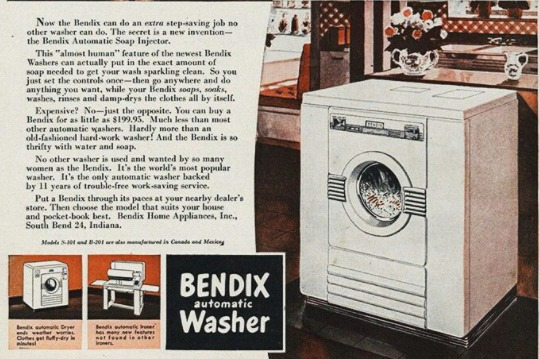
The Bendix Corporation (1924-1983) licensed their name to a line of electric clothes washing machines. The 1937 Bendix Home Laundry had a glass porthole door, a rotating drum and an electrically driven mechanical timer. The machine was able to auto-fill, wash, rinse and spin-dry. Bendix Home Appliances was later sold to Avco who sold it to Philco. Bendix was mentioned again on “My Favorite Husband” in “Television” (Jun 17, 1949).
George decides to have a talk with Miss Worthingill. George arrives just as an actor has dropped out of the play. Miss Worthingill sees George and gets an idea.
MISS WORTHINGILL: “Come in, Mr. Barrymore! That profile! That noble carriage! That resonant voice! That wavy blonde hair! Those white teeth! Those flaring nostrils! You’re gorgeous. What did you say your name was?” GEORGE: “Cugat. George Cugat.” MISS WORTHINGILL: “Gorgeous George!”
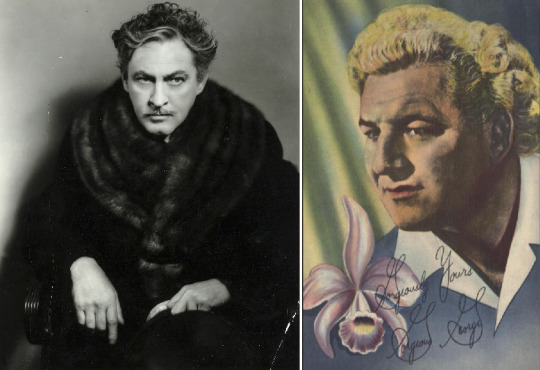
Miss Worthingill is referring to John Barrymore (1882-1942), born John Sidney Blyth, a stage, screen and radio actor of distinction. He was known for his dramatic flare and classic profile. She then calls George ‘Gorgeous George’ (to the delight of the audience). George Raymond Wagner (1915–63) was a wrestler known as Gorgeous George because of his blonde hair. He was mentioned on “I Love Lucy” in “Pioneer Women” (ILL S1;E25) and “Ricky’s Movie Offer” (ILL S4;E6).
George agrees to play the part on the proviso that Miss Worthingill not tell Liz that he is subbing for the ailing actor until they meet on stage.
George goes to Adrian’s costume shop with Cory for a fitting and is given a pair of skimpy tights, which he objects to wearing.
CORY: “George is allergic to tights. He was doing a quick change on the stage in college once. When called for his tights, they thought he said lights!”
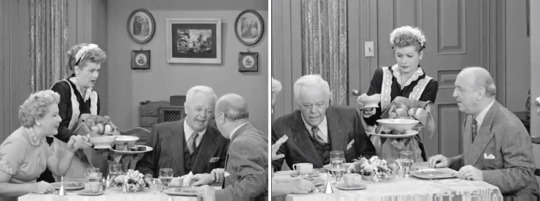
This same gag was told by Fred Mertz to Barney Kurtz in “Mertz and Kurtz” (ILL S4;E2) in 1954.
George tries on the tights and finds them tight. Adrian disagrees, saying:
ADRIAN: “The costumer is always right!”
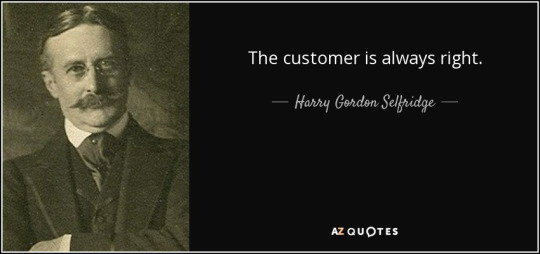
This clever wordplay takes a moment to earn its laugh. Adrian is punning on the old business motto that “the customer is always right,” a phrase that dates back to 1909, originally coined by London retailer Harry Selfridge to assure customers that they would get good service at his store.
Adrian offers George a suit of armor, but his son has the legs as mufflers on his car. Adrian gives George the tights and a girdle to take home, just in case. When Liz leaves the room, George ducks out to get to the theatre. Liz finds the girdle and tights in George’s suit pocket and suspects marital infidelity!
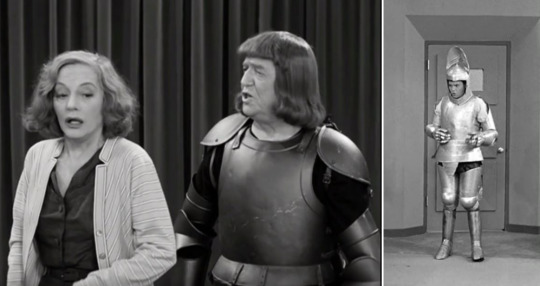
Fred Mertz wore a suit of armor in a play starring Lucy in “The Celebrity Next Door” (LDCH S1;E2) starring Tallulah Bankhead. Ricky tried on a suit of armor during pre-production for Don Juan in “Hollywood at Last!” (ILL S4;E16, right).
Adrian arrives with the armor for George. To keep his identity a secret, George wears his visor down. Liz plays Lady Alice and George is Sir Edward in an unnamed costume drama.
Oops! In the previous episode, the Young Matron’s League play Liz auditioned for was a modern play titled John Loves Mary.
LIZ / LADY ALICE: “Hark! Do I hear a footfall?”
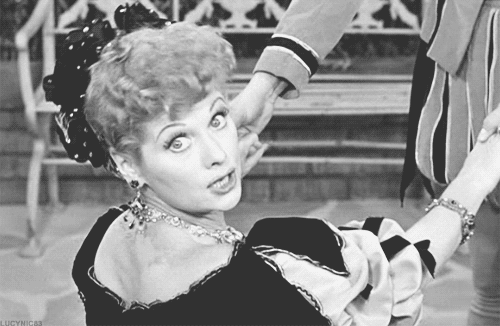
This will also be Lucy Ricardo’s first line of dialogue during her big scene in “Ricky’s Screen Test” (ILL S4;E7) for Don Juan.
Onstage in their scene, Lady Alice lifts the visor and sees it is really George! She instantly starts to have an argument in a stage whisper about the girdle she found in his pocket.
Liz throws a lit cigarette into George’s armor and extinguishes it with a seltzer bottle, ruining Miss Worthingill’s play. Later, Liz is trying to extricate George from the suit, now rusted shut and tells him if he doesn’t tell her the truth about the girdle, he will have to go live at the Smithsonian Institute.

Smithsonian Institution (dubbed ‘the Nation’s attic’) are museums located primarily in Washington DC. The Smithsonian was first mentioned in reference to Ethel’s old washing machine in “Never Do Business with Friends” (ILL S2;E31) and will be mentioned again in reference to the antique Cadillac that Fred buys for the trip to Hollywood in “Getting Ready” (ILL S4;E11). A portrait of Lucille Ball is part of the Smithsonian Portrait Gallery.
Liz and George kiss and make-up and the episode ends!
#My Favorite Husband#Lucille Ball#Richard Denning Ruth Perrott#Bea Benadaret#Smithsonian#I Love Lucy#Selfridge#Adrian#Barrymore#gorgeous george#Bendix#IJ Fox#Jay Novello#Hans Conried#John Hiestand#Bob LeMond
1 note
·
View note
Text

After BLACK CHRISTMAS came BREAKING POINT (20th Century), a big budget “WALKING TALL clone” starring Bo Svenson and Robert Culp that Bob describes as “the only film I had made up to that point I view as unsuccessful.” Alas, to film critics of the day, contemptuous of horror and other “exploitation” fare, it was the only of his films at that time worth praising.
SUMMARY
It is England in the Autumn of 1888 and Queen Victoria still rules over the British Empire. Sherlock Holmes (Christopher Plummer) the legendary private detective and his loyal companion and chronicler, the earnest Dr. Watson (James Mason), are enjoying an opulent first night at the opera in London’s fashionable West End. Meanwhile, in the squalid jungle of the East End of London, a prostitute is being horribly murdered. The dreaded killer, commonly known as Jack the Ripper for the gruesome manner in which he mutilates the bodies of his victims, has struck again. The sickly miasma of fear is as palpable as the autumn fogs which envelop the slums. The forces of law and order seem powerless to stop the savage butchery. Holmes is approached by shadowy figures to take on the case. Although Police Inspectors Foxborough (David Hemmings) and Lestrade ( Frank Finlay) more than welcome his assistance, Sir Charles Warren (Anthony Quayle), the Commissioner of Police from Scotland Yard, actively does not.
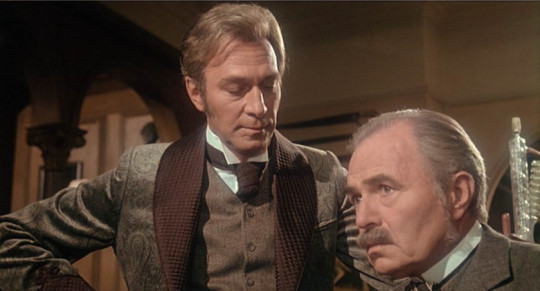
The master criminologist is guided in his pursuit of justice, through the seamy Victorian underworld, to the psychic Robert Lees (Donald Sutherland) who fearfully points him in another direction. Holmes and Watson, constantly in danger for their lives and liberty, become not only the grand masters but also the pawns in this lethal game of hide and seek. They search out and are found by the hapless Mary Kelly (Susan Clark), a girl of the streets, whose only crime is the knowledge of a fatal secret, which she will protect at all costs. She in turn leads them to Annie Crook (Genevieve Bujold), a servant who made the mistake of marrying above her station, whom even the illustrious detective cannot protect from herself.
The hunters and the hunted stealthily move through the mist-shrouded maze of Whitechapel’s cobblestone streets where every shadow instills fear. Watson is violently attacked by, and Holmes at last comes face to face with, the Ripper. As he inexorably unravels the mystery, Holmes crosses swords with Lord Salisbury (John Gielgud), the Prime Minister of England, and finds himself threatened by the macabre power of a secret society and the all-pervasive, long reaching might of the Establishment. He is challenged by no ordinary murderer but one with influential and determined friends and what he has to stop.
MURDER BY DECREE, from left: James Mason as Dr. Watson, Frank Finlay, Christopher Plummer as Sherlock Holmes, 1979, © Avco Embassy/courtesy Everett Collection
DEVELOPMENT
The idea of Sherlock Holmes tackling the Ripper case is hardly a new idea now, nor was it in 1978 when Bob Clark (Co-producer, story and director) started piecing together his story for Murder by Decree. This is first and foremost a Ripper film rather than a Holmes film as Holmes simply provides the vehicle for telling the story. We had last seen Holmes tackle the Ripper in the 1965 film A Study in Terror which featured John Neville as Holmes. In an odd twist, two actors from the previous film, one as the same character, would also appear in the new one. That version, as satisfying as it was, didn’t actually take into account much of the popular Ripper mythology that had sprung up around the unsolved case.
The script, based partially on the findings of a BBC docu-drama called Jack the Ripper (1973 TV series), while fictional, was meticulous in its research, down to the names, places, and even the grape stem clue found at the scene of one of the actual slayings. DECREE offers up the theory that Big Bad Jack was not a random psycho but a government stoolie covering up the marital indiscretions of The Royal Family.
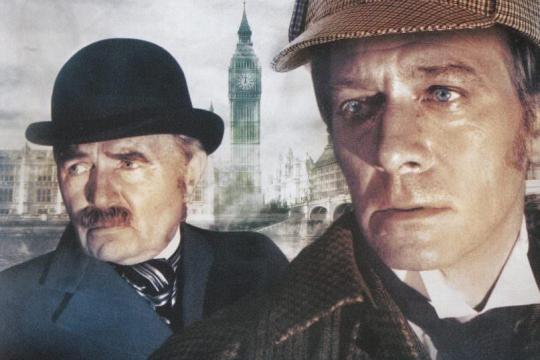
By 1978, the theory, much expanded on in Stephen Knight’s 1976 book Jack the Ripper: The Final Solution had made its mark and ridiculous conspiracy theories involving the Freemasons and the Royal family were a hotly debated topic. Apparently, Clark and scriptwriter John Hopkins (Z Cars, The Offence), felt that having Holmes rooted in a true historical case would add a certain depth to the characters. They were determined to create a more fully realized personality for Holmes. Giving him a greater level of emotion.
This slideshow requires JavaScript.
Lobby Cards
“I first came up with the idea of the film when I heard about that very first theory printed by a British journalist saying the Duke of Clarence was the killer. I thought, what an incredible notion for a movie. That theory was soon discredited and the theories that we’re following are much later ones. I really didn’t want to make a film to prove any history, I’m not trying to prove anything. I’m just doing a “what if” history. That’s why I brought Sherlock Holmes into it, who is a semi-fictional character. He’s not real, but so many think he is. By bringing him into the story, we’re saying in effect that we’re not claiming this is fact.” Director Bob Clark asserts.
PRE-PRODUCTION
Fictional 19th century detective Sherlock Holmes and real life 1800s psycho Jack the Ripper have been paired in film before, in 1956’s A STUDY IN TERROR and in Paul Naschy’s 1972 effort 7 MURDERS FOR SCOTLAND YARD (EL DESTRIPADOR DE LONDRES), but these films had no part in the development of MURDER BY DECREE, originally called “Saucy Jack Meets Sherlock Holmes’. “I had loved the old Basil Rathbone/Nigel Bruce Holmes and Watson films,” he relays, “and was intrigued by the concept of them meeting Jack the Ripper. A book had just been written about the true identity of the Ripper that I had read a review of. And the film’s concept was one my Canadian horror movie backers could easily grasp.”
This slideshow requires JavaScript.
Production Stills
CASTING
Clark described his choice and reasoning in casting Plummer and Mason. “The relationship between the two men appealed to me deeply. This is a passionate and caring Holmes; I wanted to get through his traditional reserve. I have aimed for a humanizing of the characters. First of all, we were looking for two men who really do have a relationship between them. Although I loved the Basil Rathbone – Nigel Bruce teaming, what I didn’t like was Holmes continually patronizing Watson without really enjoying him as much as he should. With Christopher, we’ve gone for a very warm, vital Holmes, a man who cares very passionately. Any Holmes up to now would never have a tear in his eye. Well, Christopher does in this, and when he sees some wrenching or pathetic things, it moves him. Conan Doyle’s Holmes was a very intellectual, brilliant egotistical man. We’ve kept that ego, that’s still there. Christopher has depth and strength, he has brilliant flashes. He’s currently the most Holmesian of all actors around. And it’s that kind of cold aristocratic Plummer that we’re playing against in this picture. We’re going very much against what has been Chris’s image and I think it will surprise and please a lot of people. James has created a much more intelligent Watson, still a bit of a fustian old soldier type, because the movie Watson is invariably that image. But James is not stupid, his character has got a good sense of humor. He’s pretty quick on the uptake yet he remains a step behind Holmes at all times naturally. But he has center stage himself several times, he does some pretty good sleuthing on his own and he’s never befuddled or patronized by Holmes. He’s much more perceptive, which I think is a necessary updating.”
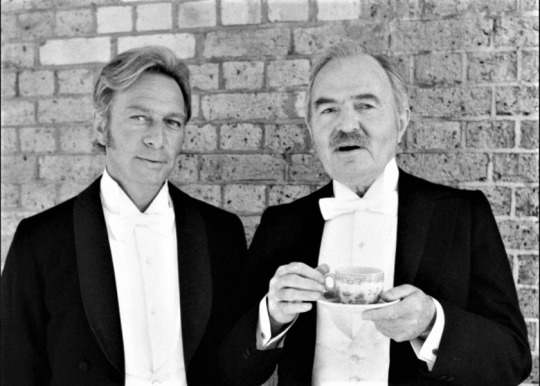
“I have approached the character of Watson as an intelligent friend of Holmes. He is often portrayed as a bumbling joker but he was supposed to be a medical doctor and Holmes would never have shared his life with an idiot.” – James Mason on the playing Dr Watson
Christopher Plummer also comments on the script’s approach to Holmes: “It gives Holmes the opportunity to be human. It’s easy to play him as supercilious, rather snobbish, but that’s not what I intended to do. I hope people like him the way I play him.” James Mason adds his comments on the subject of the good Doctor and his relationship with Holmes, “I am supremely suited to the role of Dr. Watson because it is a part that is completely within my range. I don’t see Watson as a buffoon. I think he was dependable, full of common sense, discipline and dignity. Holmes on the other hand was rather weird. Watson needed sterling qualities to be with him. Holmes daily behavioral pattern was that of a rather strange individual. “
“I don’t think anybody will ever get tired of Sherlock Holmes. I don’t think the public will ever let him die just as they wouldn’t let Conan Doyle kill him.” – Christopher Plummer
While Murder By Decree is not a Canadian production, (it is actually an Ambassador Films Production produced in cooperation with the Canadian Film Development Corporation and Famous Players Ltd. and released by Avco Embassy Pictures Corp) it did however utilize a number of Canadian stars alongside the lead in key roles. Amongst them are Donald Sutherland as the psychic Robert Lees, Genevieve Bujold as Annie Crook, Susan Clark as Mary Kelly and Chris Wiggins as Dr. Hardy. All of which handle their performances admirably. Rounding out the cast are UK actors Anthony Quayle as Sir Charles Warren (who played a radical doctor in A Study in Terror), David Hemmings as Inspector Foxborough, Sir John Gielgud as the Prime Minister Lord Salisbury and Frank Finlay as Inspector Lestrade (reprising his role from the A Study in Terror). It is a stunning cast in every way, and likely the most star-studded of any Holmes production to date.
Interview with Director Bob Clark
How did Murder by Decree come together?
CLARK: That I generated myself. I came up with the story, and brought the production together.
When MURDER BY DECREE was first announced, it was under the title SHERLOCK HOLMES AND SAUCY JACK. What made you change the title ?
CLARK: Everyone hated that title. In England, even though that’s what he was called at the time, it has a slightly comic meaning. In the States, no one had any idea what it meant, which I actually considered to be a plus because they would have to ask. MURDER BY DECREE gives just enough away and it does invoke a response.
Why did you choose John Hopkins to write the script ?
CLARK: We had to have an English writer seeing as the film was produced under an Anglo-Canadian pact. It was either John or Anthony Shaffer, but I met John in New York and I liked him-and as it turned out we had a great rapport. There were six re-writes in all as we kept changing the story. I first came up with the story when I heard about the theory that the Ripper was the Duke of Clarence. But that theory was soon discredited and the theories that we followed are later ones. Jack the Ripper is not the whole point behind the plot, but who is trying to hinder Holmes’ investigation. Radicals and Socialists are helping him, Monarchist organizations are trying to stop him and a couple of secret societies are involved, all, I must add, based on facts. It is more an adventure/intrigue than horror. The horror story evolves into a CHINATOWN or Watergate situation. There won’t be much blood as we’re going in for terror. Actually there is very rarely any blood in my films, even though people don’t believe that. People love murder mysteries and this will be subtler than most. After BLACK CHRISTMAS I was offered a lot of films along the same lines. I was going to do a film for Warner’s, PREY, a John Carpenter script, but it was cancelled due to casting problems.

Are you familiar with a film called A STUDY IN TERROR, directed by James Hill in 1964? It has a theme similar to MURDER BY DECREE.
CLARK: I didn’t even realize it had existed until I found out Frank Finley had been in it. I’d heard it was an above-average film, but when I saw it by and large I was quite disappointed. It has not stood the test of time. The techniques were very Hammer and obviously someone had pretensions for it to aim higher than that. I’m told the director left the film due to the fact that he was told he would have a lot of money to do it, but ultimately he didn’t and he had to compromise. It clearly belongs in the genre and does not rise above it.
What about the move from low budget features to the larger budgets you have now?
CLARK: Well, it’s still the same pressure. All it means really is you have higher paid stars and more value goes up on the screen. It isn’t hard at all. Our designer has done an incredible job on the sets, they add even more production value than I could ever possibly calculate. We have done as much location as you can in modern day London. We had to build the East End docks as they no longer exist in the Victorian state.
What about working with such an impressive cast ?
CLARK: Well, I spent time with Plummer and Mason as I thought I’d be awed when shooting began, but they expect to be directed and I’m delighted to be the one who has to direct them. I first wanted either Olivier or Mason to portray Watson but I can only say that it is for the good of the film that James agreed to do it. I thought of Peter O’Toole originally for Holmes, and he was scheduled, but it was one of those questions of timing. Chris Plummer was my second choice, and he is superb at putting across all the warmth and concern I envisioned for the character. Each one of the actors contributed to the final good of the film. Bujold is the best young actress working today. She is astonishing, and what she does here is really memorable. David Hemmings is a terrific actor and he is getting much better with age. Finlay gets great mileage out of a small role. Susan Clark manages a fabulous Irish accent-and what more can you say about working with Gielgud ? It was a joy. Films are ultimately about people, people who give off sparks, and these actors give off something more than that.
Were there any ego problems during filming?
CLARK: God no, everyone was just great. James Mason—what can you say about him? He was a perfect gentleman, and a marvelous actor.
You drew your best reviews for Murder by Decree, but the film really didn’t catch on at the box office. Any idea why?
CLARK: I don’t know, to tell the truth, I didn’t think much about it. It’s a great film. I quite rightly regard it as my best work, my biggest triumph so far.
Since Murder by Decree, you haven’t done anything even remotely close to the horror genre. Why is that?
CLARK: I wanted to move on. I’d done horror films. Still, I’m glad I did horror films. They’re the greatest training in the world. Making horror films requires a great deal of editing discipline and attention to rhythm. I think some of my early films are my best work. I’ve no regrets.
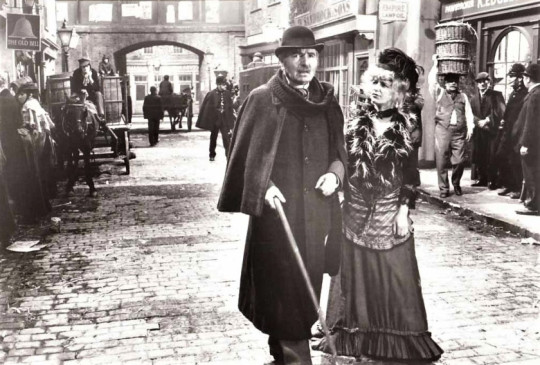
From Baker Street To Whitechapel – Recreation of Victorian England and its people
Not only is the cast of a high caliber, the production itself is remarkable. Elstree Studios was home to the construction of a vast complex of streets, cobbled alleyways, a square and a courtyard as well as the busy thoroughfare of Whitechapel’s main street. At the time, this was the largest set ever built, taking 100 men over 8 weeks to construct, in England on a studio sound stage. 4,000 square feet of cobblestones were laid in sheets each three feet by one and a half feet, made of reinforced concrete. 30 molds were made from which two batches were produced daily, taking 6 men 30 days to manufacture, using 20 tons of cement and 150 tons of sand. And finally, stale fruit and vegetables were blended with Fuller’s earth, combined with manure and then strewn along the cobbled streets. Three different types of brick were cast for the buildings and 5,000 sheets were made, each being 6 by 5 feet. 10 men spent eight weeks casting the 150, 000 square feet of bricks and tacking them to the walls. Responsible for the concept and execution of the set was Production Designer Harry Pottle, who ensured that every detail was authentic to the period, from unique tin match boxes to a lily decorated urn visible in an Undertakers window.
This slideshow requires JavaScript.
Set Design Drawing by Harry Pottle for Murder By Decree, 1978
Meanwhile, at Shepperton Studios, on their largest sound stage, an authentic recreation of the London docks was erected, complete with a river Thames flowing by. This set took 50 men two months to construct. A 100-foot wharf was made from Victorian railway ties. To recreate the murky look of the Thames, a tank, 120’ wide by 90’ long was built requiring 36 hours to fill with half a million gallons of water. All because Bob Clark was insistent on total authenticity.
“We were trying to get a flavor of the London of Gustave Dore. But he was about 30 years to early for us, we studied his drawings and engravings then updated our interpretation.” – Production Designer Harry Pottle
The effort appears worthwhile on screen when combined with actual location shooting. Along with the aforementioned Royal Academy and Wyndham’s Theater were locations which included Clink Street in the East End of London, the Royal Naval College at Greenwich for a recreation of Park Lane and finally the exterior of 221B Baker Street was actually a quiet backwater stretch of Barton Street. It is an impressive picture particularly as it was made on a total budget of $5,000,000.
This slideshow requires JavaScript.
Assassinio su Commissione Italian Lobby Cards
The attention to detail extended right through costuming and makeup as well. For a change, the prostitute victims of the Ripper were actually of the right age and dressed as the ragged drabs that they were. Unfortunately, the usual gaff of having Holmes wearing a deerstalker hat while in the city is committed throughout the film. He is also saddled with a rather improbable pipe. Sadly, these appear to be necessities of Holmesian filmmaking life, as producers and directors seem to think that the general viewing audience expects the stereotype to identify the character. Christopher Plummer comments on the look of Holmes in the film “I had my hair streaked to make him warmer looking. In the Sidney Paget drawings he had slicked down hair, very sinister looking. If the audience don’t like you, you’re dead. Unfortunately, he has that costume he is identified with. Hamlet can come on in brown velvet – Holmes has to wear that damn hat and pipe.”
When production wrapped, the makeup department presented Plummer with a Snoopy doll dressed as Holmes complete with a weighted knitted scarf.
James Mason demonstrating the present day art of using a buttonhook. The photograph was taken in 1979 outside Elstree Studios where he was filming the Sherlock Holmes mystery ‘Murder by Decree’. Mr. Mason, in his role as Dr. Watson, used a steel fold-over buttonhook to fasten his boots.
POST PRODUCTION
Interview with Score Composer Paul Zaza
Murder by Decree has your classy signature sound. What you and Carl cooked up was very different there from Black Christmas, that collection of atonal sounds and discordant effects.
PAUL ZAZA: Well, Murder by Decree was anything but Black Christmas. It was Sherlock Holmes. It was 1888. Whitechapel, London. It needed real music. Acoustic music. To put an electronic score on that would have been all wrong.
So at that point, Bob Clark knew you from Carl’s work on Black Christmas?
ZAZA: Yes. He was totally cool with both Carl and myself working on Murder by Decree. His attitude was, “You guys figure it out. Just don’t screw it up.” Bob’s head was much more into what angle he was going shoot James Mason and Christopher Plummer when they’re coming down in the carriage. Or what lens he’d use on the camera when Jack the Ripper is chasing them…that’s what he was worried about.
So you hired a full orchestra?
ZAZA: Yes. We went to London and hired the Royal Philharmonic. I was scared shitless. This was the biggest thing I’d ever done. You know, I was a kid in my twenties, standing there and conducting the Royal Phil. I had it all written out – and I crossed my T’s and dotted my I’s and thought, “This should work.” You never know until you put the baton down and you hear the first bar played. I had the big producers from New York in there, and Bob Clark. There were ninety musicians out there and the pressure was on. But I put the baton down and we conducted the first cue – and it was absolutely glorious. It was just beautiful.
It’s probably the most beautiful of all the Zaza scores we listened to as we prepped for this interview. It has a breadth of scope to it. In particular, the music for the closing credits – a theme of sorts for Annie (Genevieve Bujold) in the film – that’s a wonderful piece.
ZAZA: Thank you. Yes, it’s really one of the best things I’ve done. And of course, it’s one of the best films Bob ever did.
Is Murder by Decree one of your proudest achievements as a film composer?
ZAZA: I think so. It’s a score that’s very pure and it works. It was one of the few films in which almost everything that I wrote got used. They didn’t change it much. In almost every other film, when the directors and the producers start to get “creative” – they really butcher it up and slice and dice it into tiny pieces. They’ll have a favorite cue and they’ll end up using it twenty-five times in the film.
But Murder by Decree pretty much plays the way I wrote it. That’s a symbol of how good it is.
ZAZA: It’s also a symbol of how times have changed. Back then, if something worked and it was good, you just went with it. Whereas now, it’s filmmaking by committee. You get these boards of directors micro managing, everybody has a say in the music.
You won the Genie Award (the Canadian version of the Oscar) for Best Score for Murder. What was that like? Did it open doors for you?
ZAZA: Canada is a funny place. If this were an Academy Award, my phone would have been ringing off the hook for the next ten years. The Canadian film industry has a very strange attitude. Their attitude is “Oh, he’s too expensive now. We’d better not call him.”
Really?
ZAZA: Yeah, in fact…I probably noticed that my phone got real quiet after I won the Genie Award and I couldn’t figure out why. But I still managed to drum up some work.
This slideshow requires JavaScript.
Promotional Artwork
Cast
Sherlock Holmes – Christopher Plummer
Dr. Watson – James Mason
Robert Lees – Donald Sutherland
Annie Crook – Genevieve Bujold
Inspector Foxborough – David Hemmings
Mary Kelly – Susan Clark
Sir Charles Warren – Anthony Quayle
Lord Salisbury – Sir John Gielgud
Inspector Lestrade – Frank Finlay
Dr. Hardy – Chris Wiggins
Mrs. Lees – Tedde Moore
William Slade – Peter Jonfield
Sir Thomas Spivey – Roy Lansford
Carrie – Catherine Kessler
Henry Matthews – Geoffrey Russell
Makins – Roy Pember
Elizabeth Stride – June Brown
Catherine Eddowes – Hilary Sesta
Crew
Executive Producer – Len Herberman
Co – Producer – Rene Dupont
Co – Producer/Director – Bob Clark
Director of Photography – Reg Morris
Screenplay – John Hopkins
Production Manager – John Davis
Production Designer – Harry Pottle
1st Assistant Director – Ariel Levy
Costume Designer – Judy Moorcroft
Sound Mixer – John Mitchell
Camera Operator – Jimmy Turrell
Continuity – Marjorie Lavelly
Chief Makeup Artist – Peter Robb-King
Chief Hairdresser – Colin Jamison
Editor – Stanley Cole
Wardrobe Supervisor – Ron Beck
Construction Manager – Ken Pattenden
Property Master – Andy Andrews
Gaffer – Maurice Gillett
Special Effects Supervisor – Michael Albrechtson
Production Assistant – Marilyn Clarke
Casting Director – Irene Lamb
Production Accountant – Andy Birmingham
Still Photographer – Graham Attwood
Unit Publicist – Linda Levy ( Fred Hift Associates)
Music – Paul Zaza/Carl Zittrer
REFERENCES and SOURCES
https://sherlockholmesof221b.blogspot.com/2016/06/murder-by-decree-sherlock-holmes-hunts.html
http://www.bakerstreetdozen.com
Horror Fan 40
http://www.terrortrap.com/interviews/paulzaza/
Bob Clark Director Profile Part Five After BLACK CHRISTMAS came BREAKING POINT (20th Century), a big budget “WALKING TALL clone” starring Bo Svenson and Robert Culp that Bob describes as “the only film I had made up to that point I view as unsuccessful.” Alas, to film critics of the day, contemptuous of horror and other “exploitation” fare, it was the only of his films at that time worth praising.
1 note
·
View note
Text
PREEMPTION-AIRCRAFT LITIGATION
Jill Sikkelee, Individually and PR for Estate of David Sikkelee, deceased v. Precision Airmotive Corp., et al, 2018, 3rd Cir. (October 25, 2018), Shwartz, J.-David Sikkelee died in a plane crash, and his wife, Plaintiff Jill Sikkelee, brought state-law strict liability and negligence claims against the engine’s manufacturer, AVCO Corporation, and its Textron Lycoming Reciprocating Engine Division (“Lycoming”), among other defendants. Sikkelee alleges that the engine has a design defect. We previously held that Sikkelee’s state-law claims are not barred based on the doctrine of field preemption, but we remanded to allow the District Court to consider whether they are barred under conflict preemption. Sikkelee v. Precision Airmotive Corp. (Sikkelee II), 822 F.3d 680 (3d Cir. 2016), cert. denied, AVCO Corp. v Sikkelee, 137 S. Ct. 495 (2016). The District Court concluded the claims are conflict-preempted and that, even if they were not, Lycoming is entitled to summary judgment on Sikkelee’s strict liability and negligence claims based on Pennsylvania law. Sikkelee v. AVCO Corp. (Sikkelee III), 268 F.Supp. 3d 660 (M.D. Pa. 2017). The Court also revisited an earlier ruling and granted summary judgment in favor of Lycoming on Sikkelee’s claim that Lycoming violated 14 C.F.R. § 21.3 because it failed to notify the Federal Aviation Administration (“FAA”) of the alleged defect. Sikkelee v. AVCO Corp. (Sikkelee IV), No. 4:07-CV-00886, 2017 WL 3310953 (M.D. Pa. Aug. 3, 2017). We conclude that the District Court erred in concluding Sikkelee’s claims are conflict-preempted because Lycoming has not produced clear evidence that the FAA would not have allowed it to change the engine’s design as set forth in the type certificate. The Court also erred in granting Lycoming summary judgment on Sikkelee’s strict liability and negligence claims because there are genuine disputes of material fact concerning, among other things, causation. However, it properly granted summary judgment on her failure-to-notify-the-FAA claim. Thus, we will reverse the Court’s order granting summary judgment on conflict-preemption and state-law grounds, affirm its order granting Lycoming’s motion for reconsideration on the failure-to-notify claim, and remand for further proceedings.
The post PREEMPTION-AIRCRAFT LITIGATION appeared first on Rieders, Travis, Humphrey, Waters & Dohrmann.
0 notes
Text
Avalon GloboCare Corp. (AVCO: null) | Avalon GloboCare Announces Listing on NASDAQ Capital Market
from OTC Markets Group - News, Filings & Corporate Actions http://www.otcmarkets.com/stock/AVCO/news?id=209174
0 notes
Text
13 REASONS WHY Trailer (2017)
Jeremy Brown - Movie Trailers - My Hollywood News
13 REASONS WHY Trailer (2017)
2020 New Movies, 40 Acres and a Mule Filmworks, Affirm Films, Amblin Entertainment, Amblin Partners, Atopia, Avco Embassy, Batjac Productions, Bullwinkle Studios, Caravan Pictures, CNN Films, Davis Entertainment, DC Films, Deutsche Film-Aktiengesellschaft (DEFA), Famous Players-Lasky, Film Tank, Filmways, Focus Features, Fox Star Studios, Free Hd Movie Trailers, Gainsborough Pictures, Hollywood Pictures, Les Films du Poisson, Lions Gate Entertainment, Malofilm, National General Corporation, New 2019 Movies, New Hollywood Movie Trailer, New Movie Trailers 2017, New Movies For 2020, New Release Superhero Movies, New Superhero Movies Coming Soon, New World Pictures, Orion Pictures Corporation, Pacific International Enterprises, Relativity Media, RKO Radio Pictures, Saga Studios, Selig Polyscope Company, Strand Releasing, Troma Entertainment, Upcoming Movies 2016 To 2020, Weintraub Entertainment Group, Welling Films, Western Film Exchange
0 notes
Text
North America will attribute towards the Aerospace Drive Belts Market Growth By 2025
Global Aerospace Drive Belts Market: Introduction
Aerospace drive belts are used in alternators and generators of aircraft engines. Most of the aerospace drive belts manufactured by the companies are utilized by the general purpose aviation industry. The aerospace drive belts with V-shape are mostly preferred owing to high power transmission capacity and excellent grip properties. The general aviation industry has shown steady progress towards recovery and will continue the same in the coming period. However, aerospace drive belts market is highly cyclical and shows ups and downs.
Request to Sample of Report- https://www.persistencemarketresearch.com/samples/21277
Manufacturers offer their products to the prominent companies including Airbus, Avcraft, Boeing Business Jets, Bombardier, Cirrus, Dassault Falcon Jet, Maule Air Incorporated, and Textron Aviation. Increase in outbound tourism from China and other countries is estimated to bolster the growth in aerospace drive belts market. Moreover, air travel in emerging countries is growing, thus augmenting the demand for aircraft engine maintenance, repair and operation (MRO) services related to aerospace drive belts. Albeit, alternators with gear drives competes with aerospace drive belts.
Global Aerospace Drive Belts Market: Market Dynamics
Nearly one-third of passenger aircraft and freighters demand needed for replacement, along with substantial demand for new aircrafts by 2030 is expected to surge the growth of aerospace drive belts. In addition, general economic growth and corporate profits are significant factors contributing to demand aircrafts and consequently raising the demand for aircraft drive belts. Manufacturers are poised to develop aircraft drive belts more reliable and to embody lightweight designs. Expansion of commercial aircraft fleet will likely to facilitate additional growth in aerospace drive belts market.
The increased number of protectionist policies in Western countries challenges the trend toward increased air service liberalization. Moreover, microeconomic factors that are omnipresent across the aviation industry, including, intensified competition coupled with low fuel prices are expected to stimulate the demand for new aircraft fleet. Economic crisis caused due to low energy prices may likely to impede the pace of aviation industry and subsequently, impacting the aerospace drive belts market.
Global Aerospace Drive Belts Market: Regional Outlook
Aviation growth in European countries is slower than aviation growth in emerging countries, the region’s hefty installed base of airplanes supports the substantial demand for spare part replacement and MRO activities. North America and the Asia Pacific are expected to dominate the market share in terms of new aircraft deliveries. The aerospace drive belts market is expected to remain stable in several important markets in the Latin America and Asia-Pacific regions owing to marginal demand for business jets in the region. ASEAN countries are an important growth market, driven mainly by businesses that have international global supply chains. The Middle East and African market shares are foreseen to contract as compared to prior years. In Japan, the business environment is currently stable, thus, the volume of business flights is poised to increase slightly, but not dramatically. Furthermore, as Japan is gearing up for the Rugby World Cup in 2019 and Paralympics in 2020, the country is preparing itself for a surge in demand for business jets.
Request Report for TOC @ https://www.persistencemarketresearch.com/toc/21277
Global Aerospace Drive Belts Market: Key Participants
Examples of prominent market participants in the global aerospace drive belts market discerned across the value chain include Continental AG, Hutchinson S.A., McFarlane Aviation, Inc., and Avco Corporation (Lycoming Engines).
The research report presents a comprehensive assessment of the market and contains thoughtful insights, facts, historical data, and statistically supported and industry-validated market data. It also contains projections using a suitable set of assumptions and methodologies. The research report provides analysis and information according to market segments such as geographies, application, and industry.
0 notes